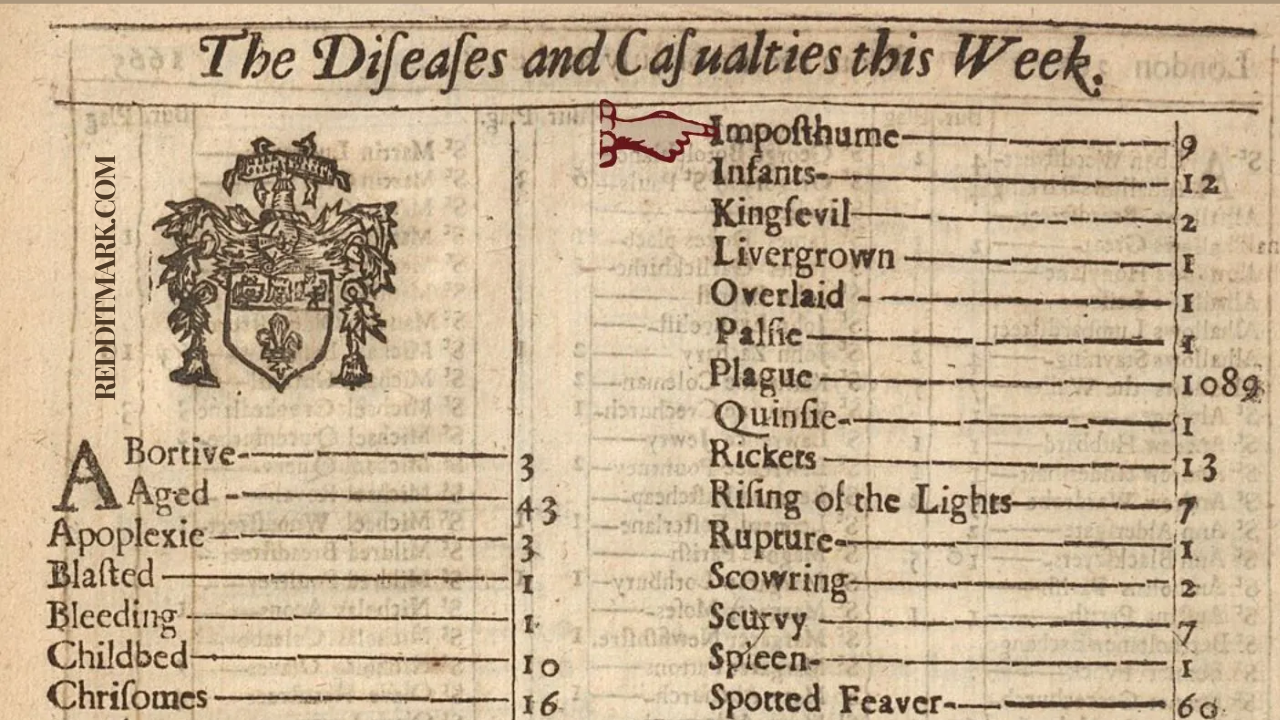Introduction to 17th century death roulette
Imagine stepping back in time to the busy, dirty streets of 17th-century London. The city came alive with the sounds of horse-drawn carriages, the chatter of roadside vendors, and the constant hum of urban existence. Yet beneath this lively exterior lay a darker reality – an international plagued by disease, crime, and premature death. This technology, with its stark contrasts and gruesome history, forms the backdrop for an interesting and chilling concept: the 17th century death roulette.
This article explores the idea of a recreation that randomly selects one of the many deaths recorded in 17th-century London. It is a journey into the past, where we delve into the ancient context, the forms of death that were not uncommon, and the bleak fascination that this kind of sport can have.
Setting: 17th-century London
London turned into a city of contrasts in the 17th century. On the one hand, it has become a center of commerce, lifestyle, and innovation. On the contrary, it turned into an area of rampant poverty, squalid housing conditions, and frequent outbreaks of deadly disease. The population grew rapidly and with this growth came an improvement in crime and violence.
Life and Death in the 17th Century
The 17th century became a dangerous time for life. Life expectancy is decreasing, with many human beings succumbing to various diseases and dangers before reaching vintage age. Diseases including bubonic plague, smallpox, and typhus were the main causes of loss of life. Poor hygiene and a lack of clinical understanding exacerbated these difficulties so that even minor illnesses were undoubtedly fatal.
In addition to disease, accidents and violence were not uncommon. The streets were dangerous and law enforcement was of basic quality. The fire became a permanent threat, with the Great Fire of London in 1666 serving as a stark reminder of the vulnerability of the metropolis’ wooden structures.
How the game 17th Century Death Roulette Works
Starting the game: Players start by spinning a wheel or pressing a button to generate a random ending.
Historical Context: Once a dying person is selected, the game offers historical records about the historical context, the person’s existence, and the main events of their demise.
Interactive Elements: Players can interact with interactive elements, including maps of 17th-century London, length illustrations, and audio narrations to enhance the experience.
Educational component: Each death is accompanied by educational content about the reasons, clinical information from the time, and societal impact.
The Grim Record Keepers: Bills of Mortality
To understand the concept of 17th Century Death Roulette, we must first look at the Bills of Mortality. These were weekly publications that recorded deaths and their causes in London. Bills were started in the early 16th century as a method to tune out the development of the plague. Over time, they became a detailed document of mortality in the metropolis.
Types of deaths recorded in 17th century Death Roulette
Bills of Mortality indexed a huge range of causes of loss of life, from common diseases to extra unusual and grotesque incidents. Here are some examples:
Plague: The most feared cause of loss of life, with several major outbreaks occurring at some point in the century.
Consumption (Tuberculosis): A good-sized and deadly ailment.
Smallpox: Highly contagious and often fatal.
Accidental Deaths: Including drownings, falls, and fires.
Violent Deaths: Murders, Assaults, and Executions.
Childbirth: A dangerous time for women, many of them die in hard labor.
These facts provide a bleak photograph of lifestyle and decay in 17th-century London, making them a fascinating but morbid trove of statistics for our dying roulette wheel.
The Game: 17th Century Death Roulette
Now let’s imagine a recreation that brings this gruesome history to life – a game known as 17th Century Death Roulette. The premise is simple but terrifying: players spin a virtual wheel, which then selects a random death from the statistics of 17th-century London. Each spin presents a unique story that transports the player back in time to the moment of untimely loss of life.
Examples of accidental deaths
To give you an idea of what the game could entail, here are some hypothetical examples of deaths that could be featured:
The Plague Victim: A service provider who succumbed to the bubonic plague during one of its devastating outbreaks.
The Fire Casualty: A Lady Who Perished in the Great Fire of London in 1666.
Duelist: A young noble slain in a duel for honor.
Birth Tragedy: A midwife who died while assisting with mostly heavy labor.
The Street Urchin: A younger boy who died of starvation and publicity during the harsh winter weather.
The challenge of morbid Curiosity in 17th century Death roulette
Why would such a grim game charm a fashionable audience? The solution lies in our inherent fascination with the loss of life and what lies beyond. Morbid interest is a herbal human trait, and records with plenty of dramatic and often tragic stories offer a safe way to explore these darker themes.
Learning through death in 17th century death roulette
The 17th-century recreation of the roulette of death also serves as an educational reason. By offering historical deaths in an interesting layout, it encourages players to study the past. It sheds light on the harsh realities of existence in 17th-century London and provides an insight into the social, monetary, and medical conditions of the time.
Ethical Considerations in 17th Century Death Roulette
While the idea of a demise roulette recreation is intriguing, it also raises moral questions. Is it suitable to turn historical tragedies into amusement? How can we stabilize the need for sensitivity with the desire to educate and engage?
Respecting the Past in 17th Century Death Roulette
To address these concerns, a game must be designed with admiration and sensitivity. They must honor the memory of those who lived and died in the 17th century and pass on their stories with dignity. Educational content material should be correct and informative, offering context and expertise, not mere spectacle.
A variety of deaths in 17th century death roulette
17th century death roulette captures the extensive form of ways people achieved their results in London. Each spin of the wheel could reveal an entirely new and surprising reason for the demise. This diversity reflects the unpredictable nature of existence at the time. From unusual illnesses to unusual injuries, each death tells a unique story. The play points out how life has become fragile and how even the slightest mishap could result in the loss of a person’s life.
Plague: A frequent visitor
One of the most common causes of loss of life turned into the plague in the 17th century. The bubonic plague, also known as the Black Death, struck London several times and killed scores. In sports, an encounter with a pandemic could be a risk for learning how the disorder develops and how people try to protect themselves. This changed during a period of considerable fear and uncertainty when the entire neighborhood was decimated by disorder.
Fire: A constant threat
Fires were another major motif for the misery of 17th-century London. The wooden buildings and narrow streets kept the city clean for fires to spread unexpectedly. The Great Fire of London in 1666 is the most famous example, which destroyed much of the city and killed many citizens. Sport should have distinctive memories of those who perished in such fires and offer a glimpse into the chaos and destruction that accompanied these failures.
Crime and Punishment
Crime turned into rampant in 17th-century London, and the punishments have been regularly severe. Executions had been public spectacles, intended to function as warnings to others. The game should encompass deaths from executions, inclusive of hangings or beheadings, highlighting the brutal justice gadget of the time. It would also shed mild on the sorts of crimes that were not unusual and how they were punished.
Childbirth: A Risky Endeavor
Childbirth became a risky time for girls in the 17th century. Many women died during labor due to complications and lack of clinical information. The play may want to act as a testament to the ladies who lost their lives in childbirth as well, highlighting the dangers and limited hospital treatment they have to undergo. Additionally, it would illustrate the strength and bravery of these girls who faced birth knowing the dangers.
Street life and starvation
Many people in 17th-century London lived in poverty and suffered to survive. Starvation and exposure were common causes of death, especially for most of the homeless and destitute. Recreation should consist of the stories of these unfortunate souls that highlight the harsh reality of street existence. It could express concern about the social and economic conditions that contributed to such tragic ends.
Accidental deaths
Accidents were as common a cause of loss of life in the 17th century as any other. From falling houses to drowning in the River Thames, the sport may want to contain a few accidental deaths. These memories could provide insight into the everyday dangers people face and the lack of safety precautions we take for granted today.
An epidemic beyond the plague
While the plague became the maximum infamous epidemic, various diseases additionally claimed many lives. Smallpox, typhus and influenza were deadly and widespread. The game should randomly select deaths from these epidemics and provide statistics on how these diseases affected the population and what measures were taken to combat them. It could have alerted to the regular threat of disease in a time earlier than modern means.
The role of superstition
In the 17th century, many people believed in supernatural causes of extinction. Witch hunts and accusations of witchcraft caused the death of many innocent people. The play could include memories of people who were executed for being witches and offered a glimpse into the concerns and superstitions that ruled the length. It could show how these beliefs influenced the way people understood and talked about death.
Reflections on Modern Life in 17th century Death Roulette
Playing a recreation of 17th century death roulette might make us reflect on how many lives have changed because of en. Advances in medicine improved living conditions, and better knowledge of disease significantly reduced several of the risks people faced in the 17th century. The sport serves as a reminder of the progress we’ve made and the importance of continuing to improve public fitness and safety. It also encourages us to understand the relative safety and harshness we experience today.
Conclusion
In 17th century death roulette, the concept of death is a fascinating combination of history, schooling and macabre curiosity. By exploring the various deaths recorded in 17th-century London, players can gain a deeper understanding of the behind-the-scenes and challenging situations faced by the survivors. While the idea should be treated with caution and respect, it offers a unique and tasty way to learn about records.
The 17th century death roulette reminds us of the surrender of the fragility of life and the enduring human fascination with the unknown. Through this play, we glimpse the lives and deaths of those who came before us and connect with history in a deeply private and meaningful way.



